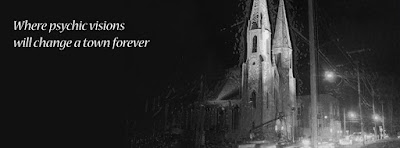CITY DESTINATION: Bath—From Roman Spa to
Cultural Heritage
By the valley of the River
Avon, more than 2,000 years ago, Romans built several baths, stunned with the
curative properties of the water. In this part of England, they settled, calling the new site as
“Aquae Sulis”, which literally means “The Water of Sulis,” reverencing the
goddess.
 |
| The Royal Crescent |
Today, the roman settlement is
a city called Bath. Located in Somerset, South West England, 97
miles from London, the metropolitan area prides of having about 88,000
residents and the title of Cultural Heritage.
The city’s theatres, museums
and other cultural and sporting venues have helped to make it a major center
for tourism with more than one million staying visitors and 3.8 million day
visitors to the city each year. There are several museums including the Museum
of Bath Architecture, Victoria Art Gallery, Museum of East Asian Art, and the
Holburne Museum.
 |
| Victoria Art Gallery |
The city has two universities; the University of Bath and Bath
Spa University with Bath College providing further education. Sporting clubs
include Bath Rugby and Bath City F.C. while TeamBath is the umbrella name for
all of the University of Bath sports teams.
Every meaningful stage of the
history of England is represented within the city, from the Roman Baths
(including their significant Celtic presence), to Bath Abbey and the Royal
Crescent, to Thermae Bath Spa in the 2000s. In fact, since 2006, with the
opening of Thermae Bath Spa, the city has attempted to recapture its historical
position as the only town in the United Kingdom offering visitors the opportunity
to bathe in naturally heated spring waters.
 |
| Bath Abbey |
There are many Roman
archaeological sites throughout the central area of the city, but the baths
themselves are about 6 meters (20 ft) below the present city street level. Around
the hot springs, Roman foundations, pillar bases, and baths can still be seen,
however all the stonework above the level of the baths is from more recent periods.
Most buildings in Bath are
made from the local, goldencoloured Bath Stone, and many date from the 18th and
19th centuries. The dominant style of architecture in Central Bath is Georgian;
this evolved from the Palladian revival style which became popular in the early
18th century. Many of the prominent architects of the day were employed in the
development of the city. The original purpose of much of Bath’s architecture is
concealed by the honey-colored classical façades; in an era before the advent
of the luxury hotel, these apparently elegant residences were frequently
purpose-built lodging houses, where visitors could hire a room, a floor, or
(according to their means) an entire house for the duration of their visit, and
be waited on by the house’s communal servants.
 |
| Bath Abbey Interiors |
The Pump Room was the original
eighteenth century meeting place and for Assemblies. Nowadays it is used as a restaurant and
the spa water can be drunk in here. The Roman Baths are open daily, closed 25
and 26 December. The opening hours vary throughout the year, and include late
evenings during July and August.
 |
| Entrance to the Roman Baths |
For accommodation and food,
Bath counts on 300 places – including over 80 hotels, and over 180 bed and
breakfasts – many of which are located in Georgian buildings. Two of the hotels
have 'five-star' ratings. There are also two campsites located on the western
edge of the city. The city also contains about 100 restaurants, and a similar
number of pubs and bars.
The flight to England should,
actually, bring you to Bristol Airport. This terminal is about 20 miles from Bath making it the city’s closest
airport. It currently serves over 113 destinations worldwide. The A4 Bristol
Airport to Bath Bus Service provides a direct link between Bath and Bristol
Airport. The service stops at various points in Saltford, Keynsham and South
Bristol, operating hourly with the total journey time taking just over an hour.
Alternatively, the Bristol
Airport Flyer express coach service will take you from the airport to Bristol
Temple Meads train station, where you can catch one of the many frequent train
services into Bath. The coach service runs on a regular basis, seven days a
week with complete journey time approximately one.

No comments:
Post a Comment